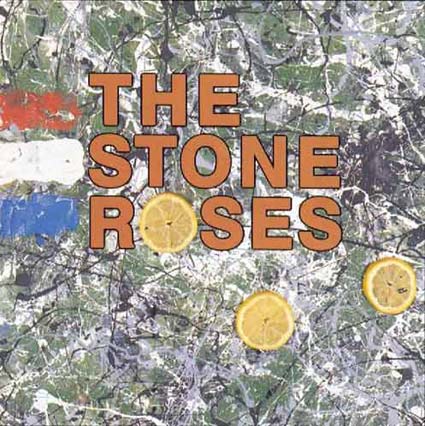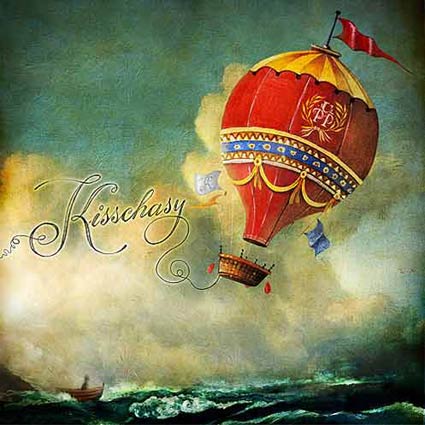The thought that music might no longer be released in hard copy is a very troubling one. Unfortunately, with download sales eclipsing those of CDs and vinyl, this could soon become reality.
We stand to lose the excitement of coming home from the shop with a brand new record, slowly unwrapping it, exploring the liner notes, sitting down and listening to it in its entirety. More importantly, perhaps, we could lose record sleeve artwork, as record labels will no longer be willing to invest in something that will only ever be viewed as a tiny thumbnail on an iPod.
Here we bring you 15 of the most creative indie album covers of all time. The music might not always be indie, but an independent record label has released each one. Looking through these amazing covers and exploring their history, it soon becomes clear that record sleeve art is a genre that deserves conservation.
1. The Stone Roses – The Stone Roses
The cover of the Stone Roses’ debut album, released by Silvertone Records in 1989, was created by John Squire, the band’s guitarist. Heavily influenced by action painting, particularly the work of Jackson Pollock, this powerful cover stands as a tribute to the May 1968 riots in Paris.
Note the ‘drapeau tricolore’ on the left-hand-side and the segments of lemon, which French rioters used as an antidote to teargas fired by police. The background is based on the Giant’s Causeway in Northern Ireland, a country that’s witnessed its own share of political struggles.
2. Menomena – Friend And Foe
Craig Thompson drew this detailed illustration, which adorns the cover of Menomena’s Friend And Foe. Studying the minutiae of the design, one spots autopsies, cow-eating-fish, conveyor belts, CCTV cameras, fungi and a host of wacky characters.
Thompson, whose work regularly features in Nickelodeon Magazine, Star Wars Gamer, Dark Horse and even Marvel Comics, uses die-cut holes in the album sleeve to reveal eyeballs and other shapes lurking behind.
3. Middle Distance Runner – Planes in Flames
Planes In Flames is the first full-length release from Washington DC indie-rockers Middle Distance Runner, who are signed to New York City-based Engine Room Recordings.
This striking album cover features a paper airplane crashing into a hillside, releasing plumes of smoke and flames. Superimposing cut-out-paper onto photography creates a highly original effect.
4. Fleet Foxes – Fleet Foxes
Rather than looking to modern art for their album cover, like the other bands in this list, Fleet Foxes and their record label Bella Union chose to look to the past instead. It paid off: this cover won the Best Art Vinyl Award 2008.
The cover of the band’s debut album features Netherlandish Proverbs, a 1559 painting by Pieter Bruegel the Elder, which depicts Flemish proverbs of the day. See if you can find the following proverbs: two dogs over one bone seldom agree (meaning to argue over a single point); to sit on hot coals (to be impatient); and to catch fish without a net (to profit from the work of others). You might also be able to spot a man defecating coins into a river!
5. Belle and Sebastian – Fold Your Hands Child, You Walk Like a Peasant
Belle and Sebastian have been art school favorites ever since the release of their first album, Tiger Milk, in 1996. In keeping with the rest of the band’s albums, the cover of Fold Your Hands Child, You Walk Like a Peasant features a beautiful photograph.
The image shows twin sisters, Gyða and Kristín Anna Valtýsdóttir, former members of the experimental Icelandic group múm. The album title is a quote taken from John Witing’s 1960 play, the Devils.
6. Pavement – Westing by Musket and Sextant
Westing by Musket and Sextant is a compilation of Pavement’s early EPs and singles, released in 1993 on the Chicago-based label Drag City. The cover is vintage Pavement, complete with polysemic symbols, hand-drawn notes, scribbles and a post-punk DIY collage aesthetic. Although the images on this cover appear to be random, they are, in fact, coded references to the band members’ favorite songs, like REM’s Maps and Legends.
7. Neutral Milk Hotel – In the Aeroplane Over the Sea
The artwork on this album cover was a collaboration between Jeff Magnum and Chris Bilheime. Magnum is Neutral Milk Hotel’s lyricist, vocalist and guitarist, not to mention a founding member of the influential independent collective The Elephant 6 Company. Bilheime is R.E.M.’s staff designer.
The image is a cropped and altered version of a European postcard found by Magnum, who is obsessed with “old-timey, magic, semi-circus, turn-of-the-century, penny arcade king of imagery”.
8. Architecture in Helsinki – Places Like This
Architecture in Helsinki are well known for the beautiful artwork on their album covers. Choosing the best among them was hard, but the cover of These Places was ultimately decided to be the most original (In Case We Die was a close runner up). The eye-catching design and crazy colours of this album cover make it stand out on the shelf, but I wouldn’t want to have been there when they read out the printer cartridges bill!
This futuristic, colorful illustration by Will Sweeney is a perfect encapsulation of the band’s ‘twee pop sound. Sweeney also designed the cover of The Heart It Races, a single taken from the album.
9. The Cribs – Men’s Needs, Women’s, Whatever
When The Cribs commissioned Rob Crane to make them this album cover, they specifically wanted him to use an image from This Sporting Life, the 1963 film starring Richard Harris.
Due to copyright technicalities, Crane was unable to use a still from the film and had to search high and low for another image that could do the album justice. Eventually, he settled on this wonderfully cinematic and atmospheric photograph of a couple standing outside a Granada picturehouse. It was voted the best cover in a poll of over 3,000 people, undertaken by Art Vinyl.
10. The Nextmen – This Was Supposed to Be The Future
Joe Pilbeam created this graffiti-inspired cover for The Nextmen’s 2007 album, This Was Supposed to be The Future, which was released on Antidote Records. Pilbeam commissioned largely unknown illustrator Alex Young to draw the cover image, which features a futuristic amalgamation of robots, hover-cars, biodomes and spacemen, all symbols that reflect the band’s futuristic, electronic sound. Young subsequently illustrated the cover of The Nextmen’s 12in, Let It Roll.
11. Death Cab for Cutie – Transatlanticism
Adde Russell created the cover to Transatlanticism in a dusty basement in Seattle. It was the first album cover that she had ever produced, although she has received many commissions since (and rightly so). The idea for the cover came to her whilst visiting a local craft store, where she stumbled across a white, Styrofoam bird. The cover is actually a small section of a much longer piece, which can be found in the cassette version of the album.
12. Roots Manuva – Slime and Reason
Oscar & Ewan felt compelled to create a real plaster sculpture of Roots Manuva’s head (sans scalp) for this great album cover, rather than settle for a computer-generated image. The realistic bright-green slime is, in fact, three bottles of aloe vera hand soap. Oscar & Ewan first made a 3D model of Roots Manuva’s head, before having it cast by a professional sculptor.
13. Simian – Chemistry is What We Are
This wonderfully surreal album cover features a sheep/dog (as opposed to a sheepdog) taken from Thomas Grünfeld’s photographic series called Misfits. Freakishly, Grünfeld’s Misfits are not computer-generated. They are examples of what’s known in the trade as ‘hybrid taxidermy’: essentially two dead animals, of a similar size, stuck together.
14. Efterklang – Under Giant Trees
When Efterklang decided to release a deluxe version of their album, Under Giant Trees, they were desperate to get graphic designer and artist Nan Na Hvass on board.
Hvass not only came up with this vibrant, colorful cover, but a magic color game that comes free with the record. Players of the game rotate four of Hvass’s images to create unusual shapes and patterns. Hvass also made the video for Efterklang’s Mirador.
15. Kisschasy – United Paper People
The work of art which graces the cover of this album is actually a watercolor by David Homer and Aaron Hayward. The pair treated the treated the piece to make it look specifically like an oil painting.
The Australian band’s label, Below Par Records, were unhappy that the band’s name appeared so small on the cover, but Homer and Hayward refused to enlarge it for aesthetic reasons. The label had their wicked way in the end, placing huge stickers bearing the band’s name in the corner of every CD.















